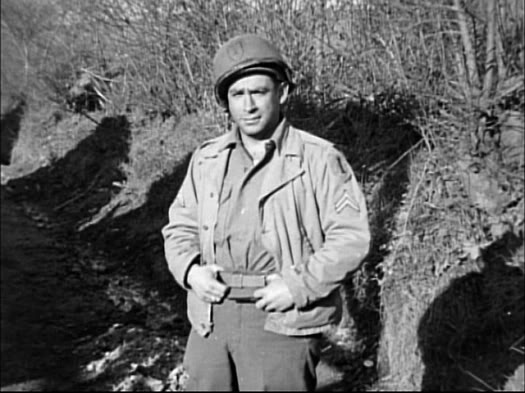Samuel Fuller (1912-1997) was an American iconoclast in best tradition. He started working in newspaper offices at age 12, later becoming a hustling crime reporter, where he got a lot of material for later scripts. He eventually became a novelist and a Hollywood screenwriter. When America entered WWII he enlisted and saw some of the toughest fighting in the European theater. He was present at the liberation of a concentration camp and filmed it. Years later, these experiences formed the basis of one of his greatest films, the anti-war war movie THE BIG RED ONE (1980). By the end of the war he had acquired a Bronze Star, Silver Star and Purple Heart.
After the war he began directing films from his own scripts. His films are special. They have a reporterís eye for the telling detail, a novelistís feel for character and a soldierís appreciation of the value of life and death. Some of Fullerís best films include THE STEEL HELMET (1951), PARK ROW (1952) a period film about the newspaper business in turn-of-the-century New York, PICKUP ON SOUTH STREET (1953), referred to extensively in the first clip below, in which a small-time pickpocket unknowingly becomes involved in a matter with international implications, FORTY GUNS (1957) a psychological western that helped to change the visual vocabulary of action movies, SHOCK CORRIDOR (1963) and THE NAKED KISS (1964), inexpensive films that defied censorship and packed a mighty wallop of social relevance, the aforementioned THE BIG RED ONE (1980) and 1982ís nearly indescribably WHITE DOG.
Source: IBBD Filmography
During World War II, Fuller joined the United States Army. He was assigned as an infantryman to the 16th Infantry Regiment, 1st Infantry Division, and saw heavy fighting. He was involved in landings in Africa, Sicily, and Normandy, and also saw action in Belgium and Czechoslovakia. In 1945, he was present at the liberation of a German concentration camp in Falkenau and shot 16-mm footage, known as V-E +1, that was later integrated into the French documentary Falkenau: The Impossible (1988). In 2014, the footage was selected for the United States National Film Registry. For his military service, Fuller was awarded the Silver Star, Bronze Star, Purple Heart, and Combat Infantryman Badge. He reached the rank of corporal. Fuller used his wartime experiences as material in his films, especially in The Big Red One (1980), the nickname for the 1st Infantry Division. After the war, Fuller co-authored a regimental history of the 16th Infantry.
Source: Find a Grave

PRIVATE CITIZENS SUPPORTING AMERICA'S HERITAGE
American
War Memorials Overseas, Inc.
War Memorials Overseas, Inc.
Fuller Samuel Micheal
Name:
Samuel Micheal Fuller
Rank:
Sergeant
Serial Number:
Unit:
16th Infantry Regiment, 1st Infantry Division
Date of Death:
1997-10-30
State:
Massacusetts
Cemetery:
Unknown
Plot:
Row:
Grave:
Decoration:
Comments:
